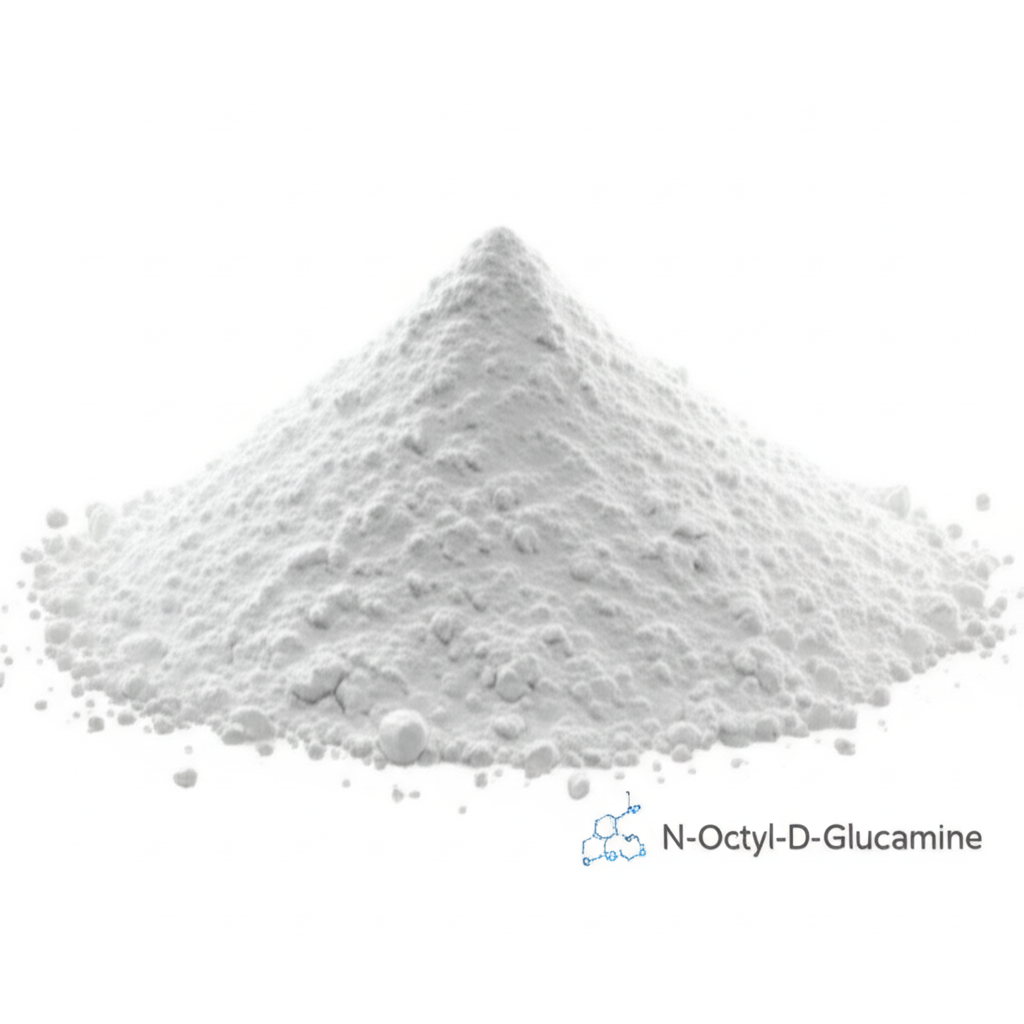N-Octyl-D-Glucamine: A Versatile Pharmaceutical Intermediate and Chiral Resolving Agent
Explore the chemical properties, synthesis, and broad applications of N-Octyl-D-Glucamine (CAS 23323-37-7).
Get a Quote & SampleProduct Core Value

N-Octyl-D-Glucamine
N-Octyl-D-Glucamine (CAS 23323-37-7) is a vital compound widely recognized for its dual role as a key pharmaceutical intermediate and an effective chiral resolving agent. Its unique chemical structure, combining a hydrophobic octyl chain with a hydrophilic glucamine moiety, grants it versatile properties applicable across several industries, notably in the synthesis of pharmaceuticals like naproxen and dextroprofen.
- The critical role of N-Octyl-D-Glucamine as a pharmaceutical intermediate is well-established, particularly in the synthesis of naproxen and dextroprofen.
- As a chiral resolving agent, it facilitates the separation of enantiomers, a crucial step in producing pure chiral drugs.
- Its surfactant properties make it valuable in biotechnology for solubilizing proteins and in drug delivery systems.
- The synthesis methods, ranging from traditional catalytic hydrogenation to advanced palladium-catalyzed reductive amination, highlight ongoing innovation in its production.
Advantages Offered by the Product
Versatile Intermediate
As a pharmaceutical intermediate, its use in the synthesis of naproxen and dextroprofen underscores its importance in creating key active pharmaceutical ingredients.
Chiral Resolution Capability
Its effectiveness as a chiral resolving agent aids in the separation of enantiomers, a critical aspect for producing stereochemically pure pharmaceuticals, contributing to safer and more effective drug therapies.
Green Chemistry Integration
The increasing adoption of green chemistry principles in its synthesis, such as solvent-free methods and biocatalysis, signifies a move towards more sustainable and environmentally friendly chemical manufacturing processes.
Key Applications
Pharmaceutical Synthesis
Leveraging its capabilities as a pharmaceutical intermediate, it plays a key role in the synthesis of important drugs, showcasing its value in the pharmaceutical industry.
Chiral Separation
Its function as a chiral resolving agent is paramount for the pharmaceutical sector, ensuring the enantiomeric purity of active pharmaceutical ingredients.
Biotechnology
In biotechnology, its surfactant properties are utilized for protein solubilization and in the development of advanced drug delivery systems, highlighting its utility beyond traditional chemical synthesis.
Catalysis
Its role as an additive in zeolite synthesis enhances catalytic properties, showcasing its application in broader chemical processes and materials science.
